The prototype. Saddle-tank steam switchers didn’t require a tender, so they could handle the tight curves and light rail of industrial track. These locomotives carried a relatively small amount of coal or fuel oil, usually behind the cab, and carried water in a tank that surrounded the boiler.
Saddle-tank steam switchers were used in mining, lumber, and other industrial operations through the steam and steam-to-diesel transition eras. Many of these lightweight locomotives also served as “shop goats” at railroad locomotive and car shops. The wheel classification for this type of locomotive has a “T” at the end to designate it as a “tank” engine.
The prototype for the Bachmann model is an 0-6-0T built by Alco in 1910 for a mining operation in eastern Ohio. The HO scale locomotive matches prototype drawings in the Model Railroader Cyclopedia Vol.1: Steam Locomotives (Kalmbach Publishing Co.).
All the lettering on the locomotive is straight and opaque. Two copper-colored rectangles representing builder’s plates are printed on the sides of the graphite-colored smoke box. The black paint on the boiler, coal bunker, and cab has a smooth satin finish.
The body shell is made of plastic. Separately applied detail parts include the piping and sand lines. The bell, whistle, handrails, and stanchions are metal.
Molded details are well defined, including the rivet seams on the cab roof and the wood grain on the pilot beam. The cab interior includes a molded backhead and painted crew figures. None of the windows have glazing.
The frame, including the cylinders, is die-cast metal. The motor is mounted on top of the frame and connected via a worm gear to a gear box that turns the rear axle. The metal side rods transfer power to the other two axles. The running gear is chemically blackened for a more realistic appearance.
The printed circuit board is above the motor. The Bachmann DCC decoder measures 5/16″ x 1″ and has seven wires that are soldered to the PC board.
I also ran the engine with an NCE Corp. Powercab DCC system. The Bachmann decoder supports 28 or 128 speed steps. However, even after setting the starting voltage (CV2) to its maximum value of 32, the model didn’t move until speed step 4 when running in either 28 or 128 speed steps.
Function 0 turns the headlight on and off, and function 1 dims the headlight. When the engine is in reverse the backup light shines.
In both DC and DCC the switcher accelerated to 40 scale mph, which is fast for an industrial switcher.
According to a test with a digital force meter, the switcher has a drawbar pull equivalent of six HO freight cars on straight and level track. On our layout the 0-6-0T pulled a cut of eight cars, but it struggled up a grade and when pushing the eight cars through curves.
This tank engine is a well-detailed model, but be mindful of its light pulling capacity.
Price: $125
Manufacturer
Bachmann Trains, Inc.
1400 E. Erie
Philadephia, PA 19124
www.bachmanntrains.com
Road names: Union Pacific; Atchison, Topeka & Santa Fe; Colorado Mining Co.; Midwest Quarry & Mining Co.; Weyerhaeuser. Painted and unlettered version available.
Era: 1910 to 1950s
Features:





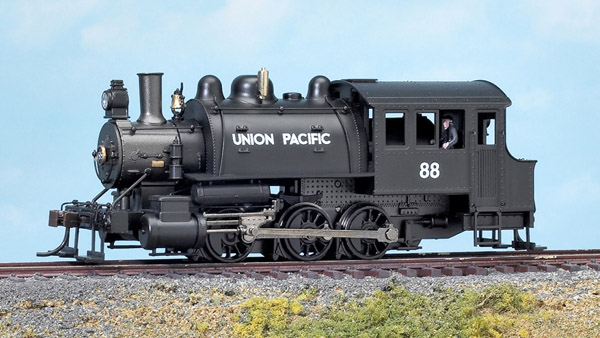
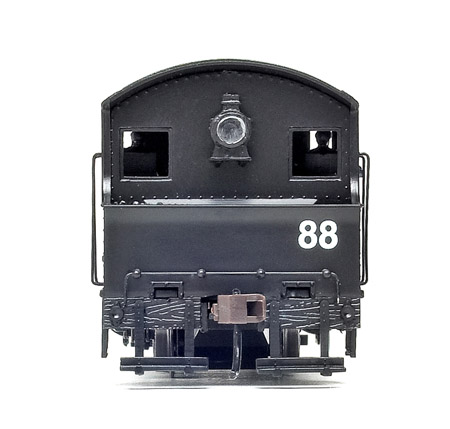
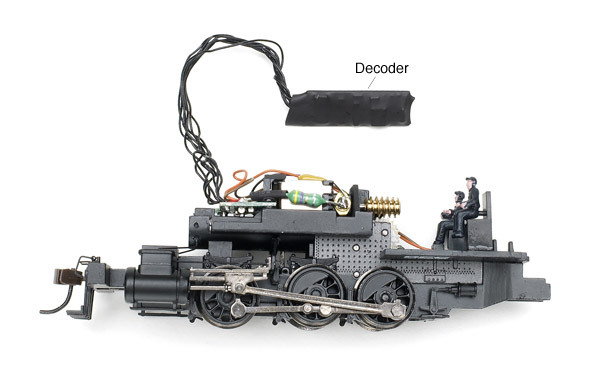
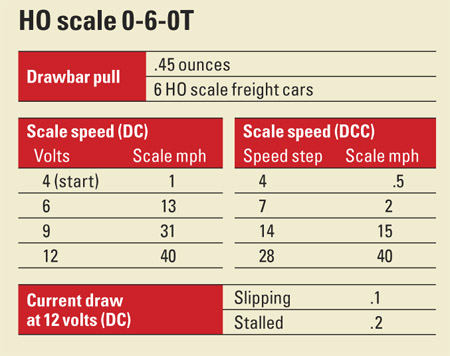

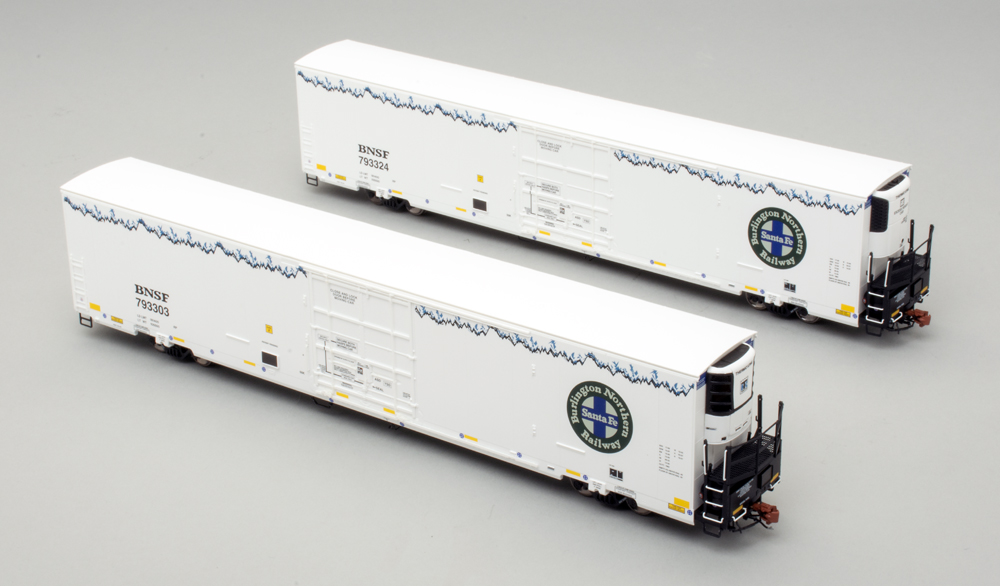
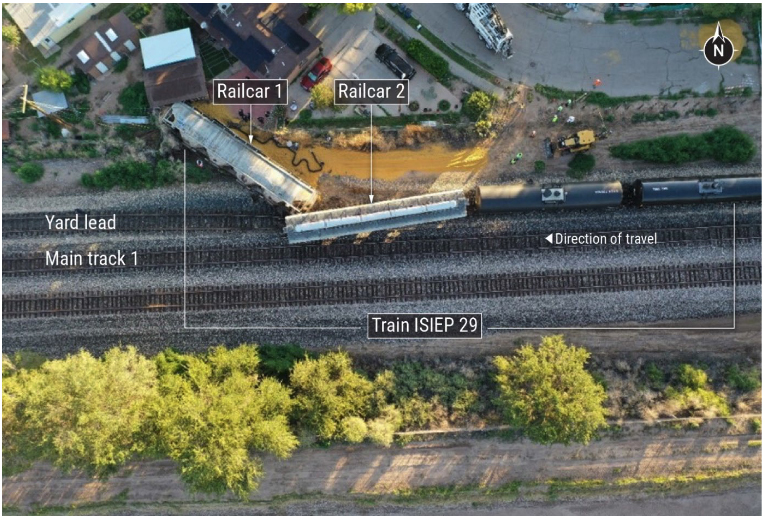
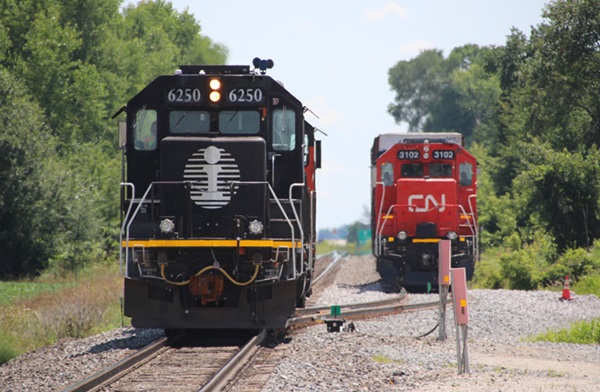
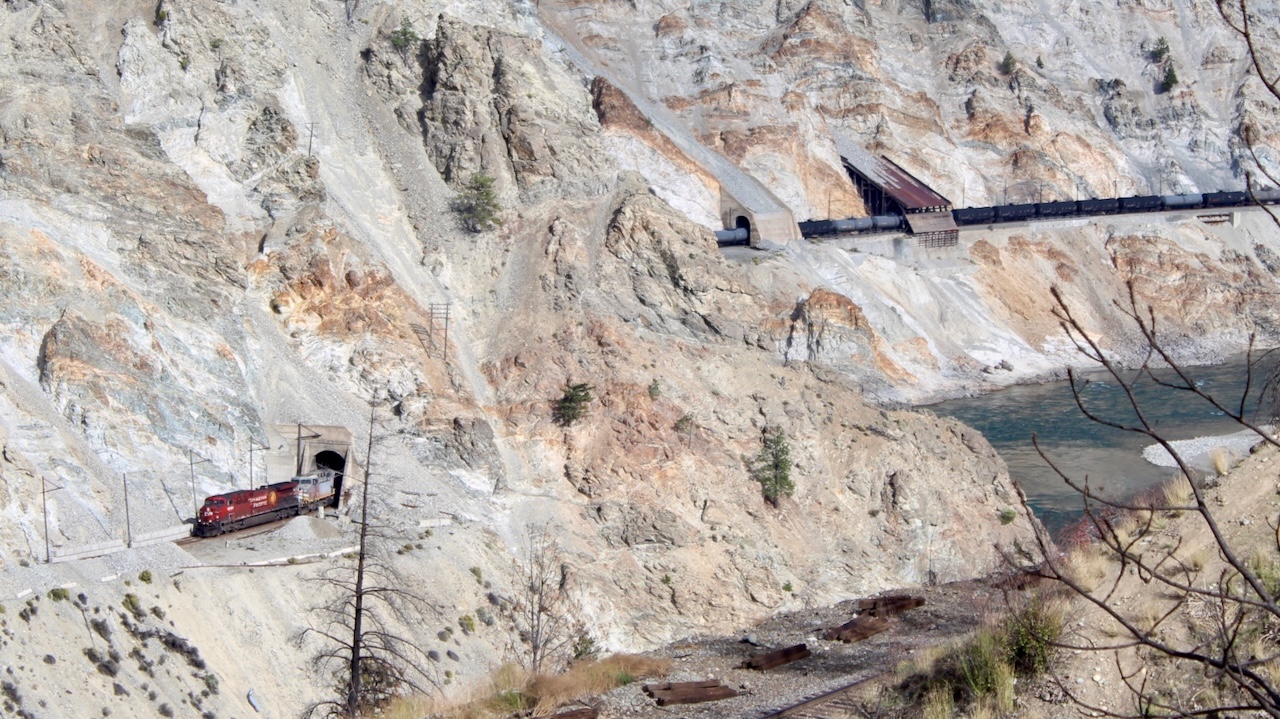




I really like this review, I own the 0-6-0 and really like it
Another incredible engine. Bachmann Forever!
Although the Santa Fe version is complete fantasy, at least, when combining it with the old DC version, we have now two fantasy road numbers available. And in double traction they can pull their share: 6 NMRA-weighted hoppers up a 4 % grade.
Has any one bought this engine and used it on a logging railroad?
I've just purchased this little loco with the Bachmann DCC dual mode decoder ( running DCC ) and would like to know if you can replace this bachmann decoder with a sound decoder with motor control.
Is there a brand that could fit where the Bachmanns decoder now fits? and if so what size and shape speaker should/could be used? Maybe room in the cab for speaker??
Sure like to get this little guy talking. LOL
Anybody try adding sound to this ? I plan on a dockside scene where an independent RR may switch the dock and car ferry . Would like an excuse for steam and this would seem to be an nice additon .
William Debuvitz: I believe the Model Power 0-6-0T is a reissue of the Mantua engine. I have one and had my LHS install a TCS decoder (minimum functionality but enables DCC). Metal construction, good pulling power, but stalls easily over turnouts. I've seen mods to provide all-wheel pickup online and/or in the MR forums to correct that.
Nice little locomotive. I like how it is lettered in Union Pacific. NICE
SPEAKING OF SADDLE TANK ENGINES – DON'T FORGET THE ONE THAT HOBBYLINE HAD. IT WOULD BE NICE TO DO A CONEST AROUNDTHIS ENGINE TO SEE WHAT COULD BE DONE TO CHANGE IT'S APPEARANCE?
Hi William,
I took this locomotive apart and space is pretty tight. I didn't see any practical way to add any extra weight over the drivers.
Have a good day.
Dana Kawala
Senior editor
I own one of the earlier versions of this engine. A friend at the club installed a Digitrax Decoder. The only real drawback of this engine is that it has such a short wheelbase that it stalls in turnouts. Don't know if anything can be done about this or not.
I own one of the earlier versions of this engine. A friend at the club installed a Digitrax Decoder. The only real drawback of this engine is that it has such a short wheelbase that it stalls in turnouts. Don't know if anything can be done about this or not.
The 0-6-0T runs very well, but I would prefer a tank locomotive like the "Booster" and "Little Six" that was offered by Mantua back in the 1950s and 1960s. Some people say that there was no such prototype, but I have seen a number of photos of tank locos like the one made by Mantua. I got myself an old Booster and had a friend at a machine shop remove some of the inner part of the casting so I could put it on the mechanism for the Bachmann loco. It came out great. The added weight of the metal casting gave it more traction and it did not seem to overload the motor. I used an earlier version of the Bachmann 0-6-0T which did not have a decoder. I wish someone would reissue that neat little Mantua tank loco.